Your roof is your home’s first line of defense against the elements, shielding you from rain, wind, and sun. Yet, many homeowners are unaware of how long their roof should last or when it’s time for a replacement. Understanding the lifespan of your roof is crucial for timely maintenance and avoiding costly repairs.
In this blog, we’ll cover how long does a roof last, including lifespan by material, key factors that affect it, and tips to extend its life.
Lifespan by Roofing Material
The lifespan of a roof is influenced by the material chosen, as well as external factors such as climate, installation quality, and maintenance. Roofing materials come with varying degrees of durability, offering different benefits for homeowners.
In this section, we’ll explore the average lifespan of different roofing materials and examine the factors that contribute to their longevity.
Asphalt Shingles
Asphalt shingles typically last between 15–30 years, with high-end architectural shingles lasting closer to 30 years. Their longevity depends on factors such as the type of asphalt used and environmental conditions.
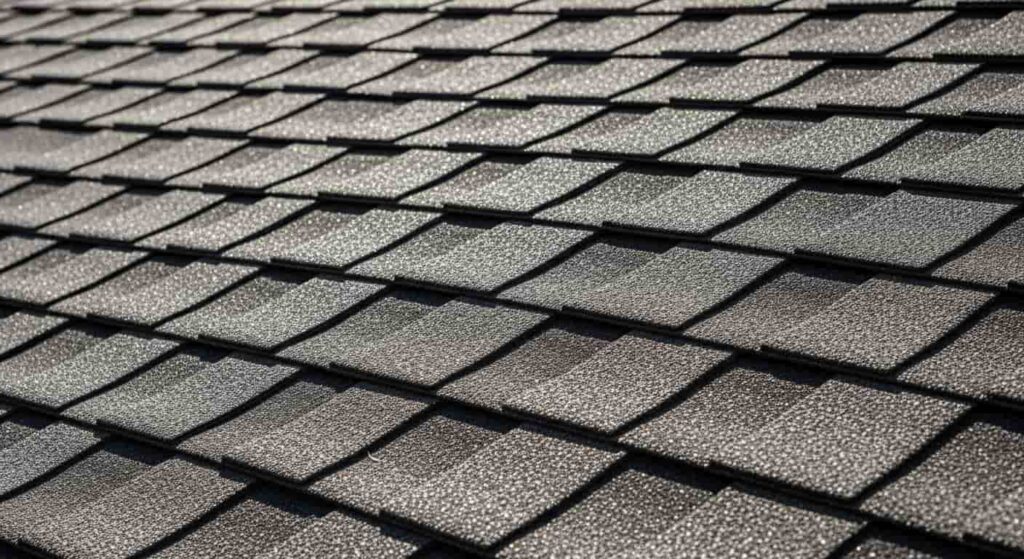
Climate Conditions:
Asphalt shingles are most effective in moderate climates. They can withstand light snow and rain but may degrade faster in regions with extreme temperatures, especially excessive heat or ice. Prolonged exposure to hot, sunny climates can cause the shingles to crack and deteriorate, while cold, wet climates can cause them to become brittle and curl.
Installation Quality:
Proper installation is crucial for maximizing the lifespan of asphalt shingles. If they’re not installed correctly, issues like improper sealing can lead to leaks, and nails that are not driven correctly can result in shingle lifting and premature wear.
Maintenance Routine:
Asphalt shingles require regular inspection and maintenance, such as cleaning debris from gutters and ensuring proper attic ventilation. Ensuring that shingles are not cracked or damaged can extend their lifespan. Neglecting maintenance can cause leaks, algae growth, and overall degradation.
Material Type:
The quality of the asphalt shingles themselves also affects their lifespan. Higher-quality architectural shingles, which are thicker and more durable, tend to last longer and resist weathering better than standard 3-tab shingles.
Impact of External Factors:
External factors like high winds, hail, and falling debris can shorten the lifespan of asphalt shingles. In regions with frequent storms or harsh weather, the shingles are more prone to damage.
Metal Roofs
Metal roofs generally last between 40–70 years, with copper roofs often lasting over 100 years. The lifespan varies depending on the metal used (e.g., steel, aluminum, copper) and the coating or treatment applied.
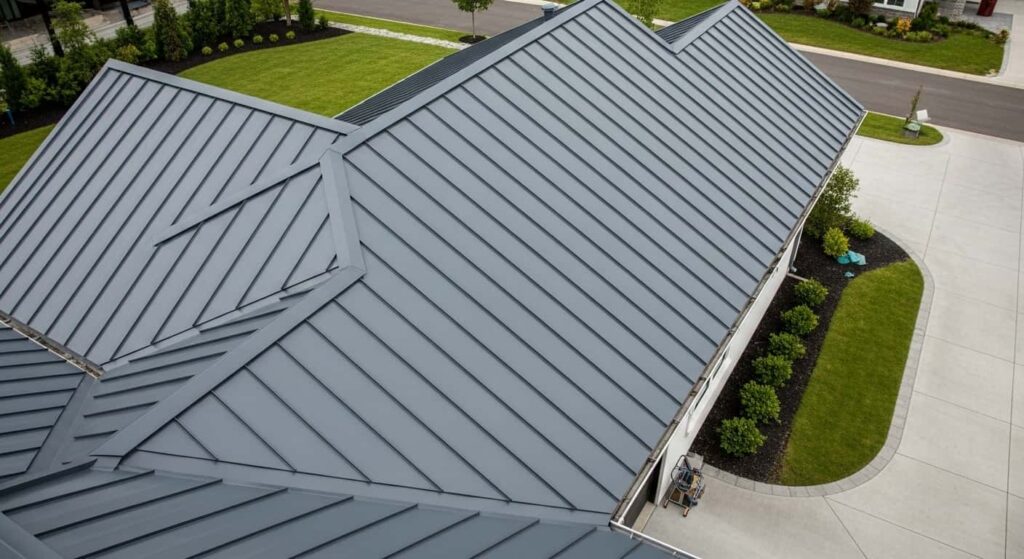
Climate Conditions:
Metal roofs perform exceptionally well in areas with extreme weather conditions. They are highly reflective, which helps reduce energy costs in hot climates. However, in coastal regions, exposure to salt and humidity can cause corrosion unless the roof is properly coated.
Installation Quality:
The quality of installation directly impacts the longevity of metal roofs. Proper fastening, sealing, and alignment prevent issues such as loose panels, leaks, or wind damage. Incorrect installation may also lead to rust if water accumulates between panels.
Maintenance Routine:
While metal roofs require minimal maintenance, regular inspections are necessary to ensure there is no buildup of debris, rust, or loose fasteners. Preventive maintenance can extend the roof’s life by addressing minor issues before they become major problems.
Material Type:
The material used plays a large role in durability. Galvanized steel, aluminum, and zinc-coated metals are generally more resistant to rust and damage. Premium materials, such as copper, are more durable and can withstand harsh conditions much longer than cheaper metals.
Impact of External Factors:
Metal roofs are susceptible to rust, especially in areas near coastal regions. Additionally, impact damage from falling tree branches, hail, or debris can cause dents and affect the roof’s integrity, although this is less of a concern with thicker metals.
Slate Roofs
Slate roofs are incredibly durable, lasting anywhere from 75–200 years. They are one of the longest-lasting roofing materials, thanks to their natural composition and resistance to weathering.
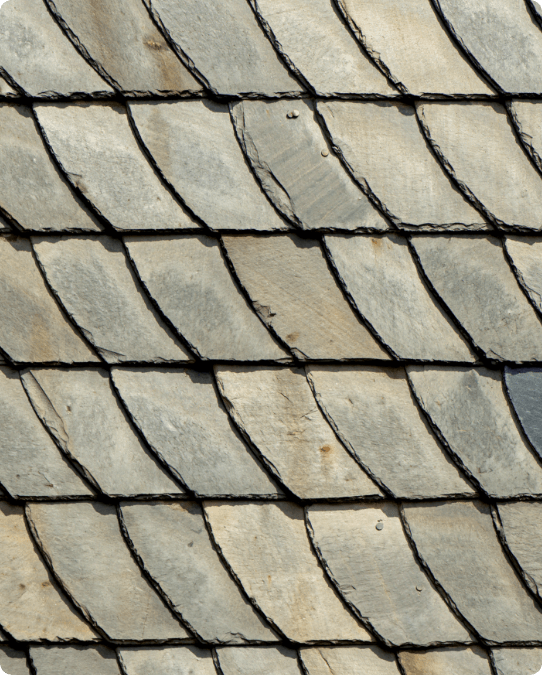
Climate Conditions:
Slate is highly resistant to a wide range of weather conditions, including rain, snow, and heat. However, freeze-thaw cycles (common in colder climates) can cause the slate to crack if water penetrates and freezes. In warm climates, slate roofs generally last longer, as they are not subjected to freeze-thaw stress.
Installation Quality:
Slate roofs require skilled professionals for installation. Poor installation practices, such as improper sealing or insufficient attachment of tiles, can lead to water infiltration and other issues that shorten the roof’s lifespan. Correctly installed slate roofs can last well over 100 years.
Maintenance Routine:
While slate is a low-maintenance material, periodic inspections are necessary to replace cracked or missing tiles. Cleaning gutters and ensuring that water can flow freely off the roof also prevents long-term damage.
Material Type:
The type of slate used—whether it’s high-quality natural slate or synthetic slate—affects the roof’s durability. Natural slate is the most durable and can last for centuries, while synthetic slate may be more prone to damage and wear over time.
Impact of External Factors:
Slate is susceptible to cracking from heavy impact, such as falling tree branches or debris during storms. Additionally, its weight puts significant strain on the roof structure, which needs to be reinforced to support it properly.
Read More: Westchester Roofing Trends and Innovations for 2025
Clay and Concrete Tiles
Clay and concrete tile roofs typically last between 50–100 years. Their longevity is primarily due to their durability and resistance to weather and fire damage.
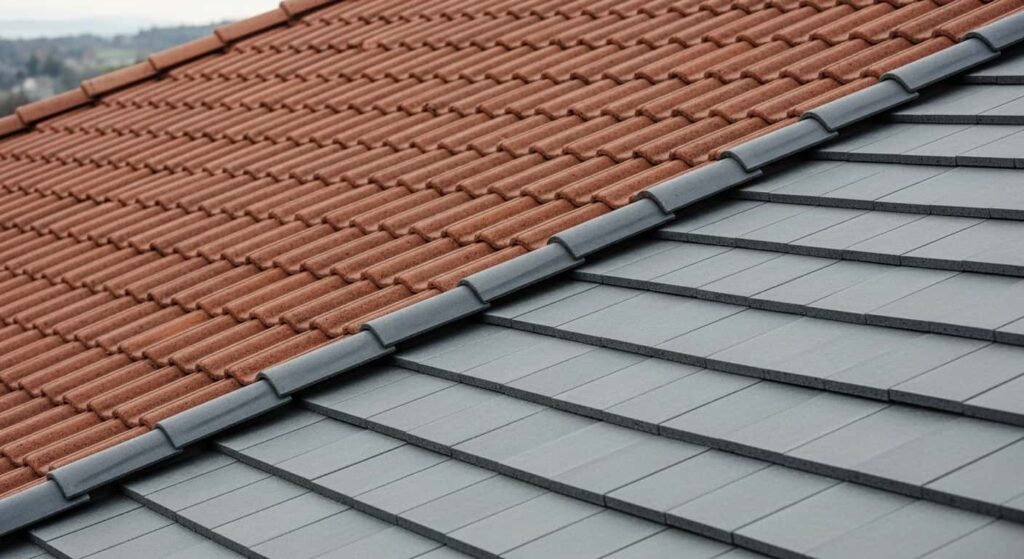
Climate Conditions:
Clay and concrete tiles perform best in dry, warm climates. They are less suited to areas with freeze-thaw cycles, as water can seep into the tiles and crack them when frozen. However, in moderate to hot climates, these materials are extremely durable.
Installation Quality:
Clay and concrete tiles are heavy, requiring proper roof support and secure installation. If tiles are not correctly positioned or fastened, they are vulnerable to dislodging during high winds. Proper installation ensures their longevity and ability to withstand storms.
Maintenance Routine:
Minimal maintenance is required for clay and concrete tiles, but regular inspections for cracked or broken tiles are essential. Ensuring gutters and drains are free from debris is also crucial to prevent water damage.
Material Type:
High-quality, well-fired clay tiles last longer than cheaper concrete tiles. Additionally, tiles with a protective coating or glaze can offer extra protection against water penetration and discoloration.
Impact of External Factors:
Clay and concrete tiles can crack or break under impact, such as falling tree branches or hail. However, the tiles’ resistance to fire and heat makes them ideal for regions prone to wildfires.
Wood Shingles and Shakes
Wood shingles and shakes last between 20–40 years. The lifespan depends on the type of wood, weather conditions, and maintenance practices.
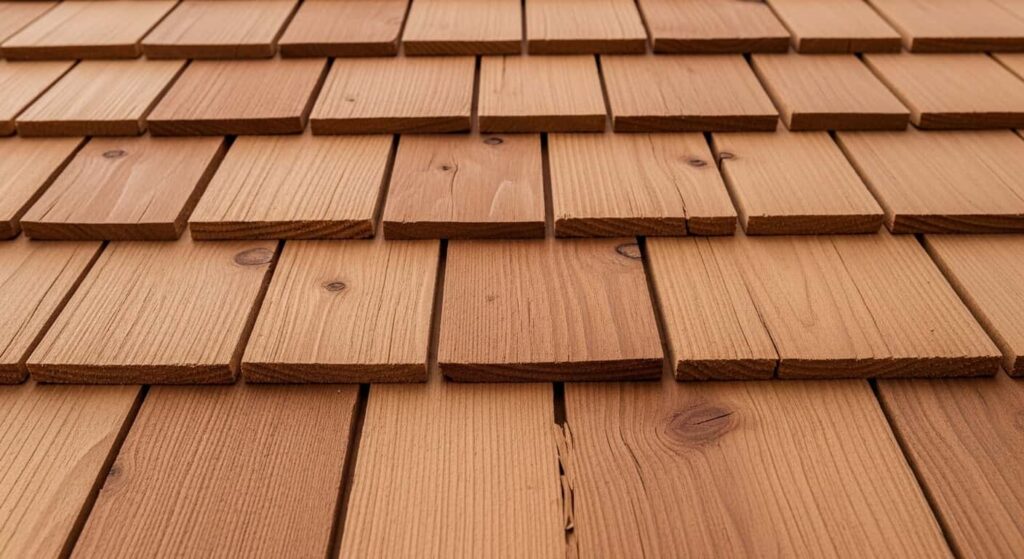
Climate Conditions:
Wood shingles and shakes thrive in dry climates but may deteriorate quickly in wet, humid environments. In areas with heavy rainfall or frequent snow, wood roofs are prone to mold, rot, and insect infestations.
Installation Quality:
Proper installation ensures that shingles and shakes are aligned correctly, with adequate spacing to allow proper airflow. Improper installation can lead to water infiltration, mold, or rot, significantly shortening the roof’s lifespan.
Maintenance Routine:
Regular maintenance is critical for wood roofs. Cleaning the roof of debris, sealing the wood to prevent moisture damage, and replacing damaged or rotting shingles can greatly extend their lifespan. Neglecting maintenance can lead to irreversible damage.
Material Type:
Cedar is the most common material for wood shingles and shakes due to its natural resistance to moisture and insects. Other types of wood may be more prone to rot and decay, affecting the roof’s lifespan.
Impact of External Factors:
Wood shingles and shakes are highly susceptible to damage from falling branches, hail, or severe storms. Additionally, they are prone to insect infestations and rot if not treated or maintained properly.
Synthetic Roofing (Rubber, Composite, Plastic Blends)
Synthetic roofing materials last between 30–50 years, depending on the quality and type of material used.
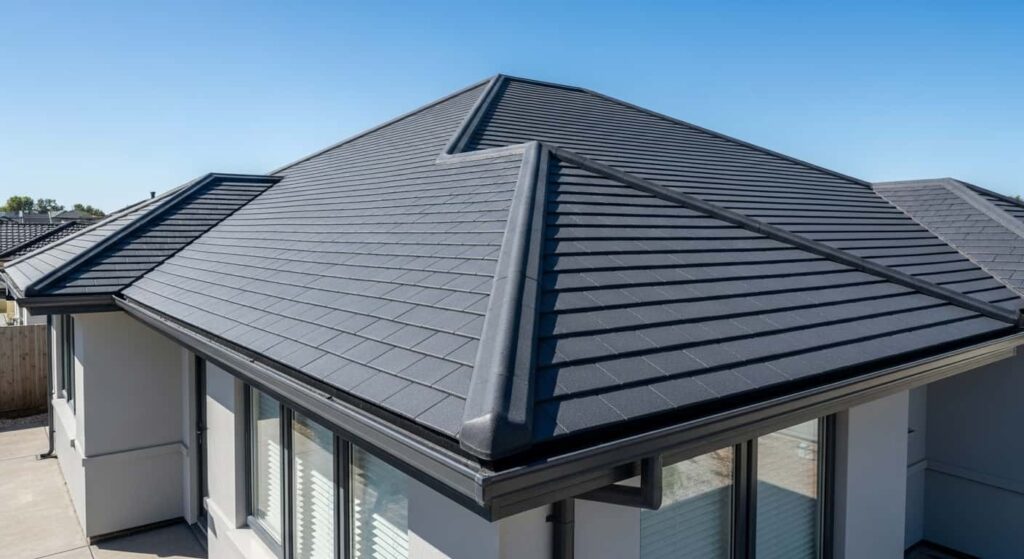
Climate Conditions:
Synthetic roofing materials are designed to withstand a variety of weather conditions, including UV rays, high heat, and cold. However, prolonged exposure to direct sunlight can cause certain types of synthetic materials to degrade, so coatings that protect against UV rays can be beneficial.
Installation Quality:
As with any roofing material, installation quality is vital. Proper installation prevents issues like leaks, misalignment, and premature wear. Poor installation can result in reduced lifespan due to gaps or improper sealing.
Maintenance Routine:
Synthetic roofs require minimal maintenance compared to other materials. However, regular inspections for cracks or damage caused by impact are still necessary to ensure the material is performing well. Cleaning the roof periodically can also help preserve its appearance and functionality.
Material Type:
The durability of synthetic roofing depends on the material blend. Higher-quality rubber, plastic, or composite materials tend to last longer and resist UV degradation and impact damage better than lower-quality options.
Impact of External Factors:
Synthetic roofs are resistant to most weather conditions but can be prone to damage from sharp objects or heavy impacts, such as tree limbs or hail. While they are designed to be durable, excessive force can still cause punctures or cracks.
Read More: The Ultimate Guide to Roof Repair in 2025
Tips to Extend Your Roof’s Life
Choosing the right material is essential, but proper care and maintenance are just as important to ensure your roof lasts as long as possible. Simple tasks like cleaning gutters, trimming overhanging trees, and checking for small damages can help your roof perform at its best and avoid costly repairs.
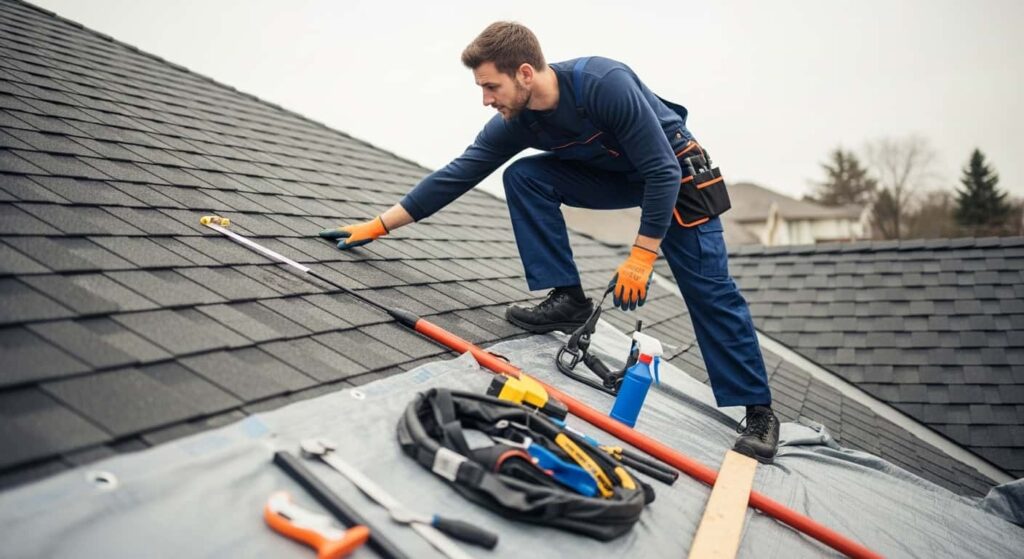
Here are some helpful tips for maintaining your roof and getting the most out of its lifespan.
Regular Inspections
Regular inspections help detect hidden roof issues early, preventing costly repairs. Professional roofers can identify problems that may not be visible during a casual check, such as damage to the flashing or issues with the roof’s ventilation. It’s recommended to inspect the roof at least once a year and after severe weather events like storms. These inspections allow homeowners to address minor problems before they escalate into major ones.
Ignoring small roof issues can lead to more significant damage over time. Inspections also help to ensure the roof’s structural integrity, giving you peace of mind. Early detection saves money and extends the lifespan of your roof, reducing the need for costly replacements. Regular inspections are a proactive step in maintaining the longevity of your roof.
Clean Gutters and Downspouts
Clogged gutters prevent water from flowing properly off the roof, leading to leaks, water damage, and even structural issues. Cleaning your gutters twice a year, especially in spring and fall, is essential for maintaining your roof’s health. Keeping gutters clear of leaves, debris, and dirt ensures proper drainage, preventing water from backing up onto the roof.
Additionally, check the downspouts to make sure water is directed away from the foundation of your home. Clogged or damaged downspouts can cause water to pool around the foundation, leading to long-term structural problems. A proper drainage system reduces the risk of water damage to both the roof and the home’s foundation.
Trim Overhanging Trees
Overhanging tree branches can cause significant damage to your roof. Branches rubbing against shingles can loosen them, leading to leaks or other roof damage. During storms, falling branches can also cause major structural damage. By regularly trimming tree branches and removing dead or decaying trees, you reduce the risk of these hazards.
Additionally, overhanging trees contribute to debris buildup on the roof and in the gutters, leading to potential blockages. Regular maintenance of nearby trees prevents issues caused by obstructed water flow and keeps your roof in optimal condition. Proper tree management helps maintain a safe and damage-free roof.
Proper Ventilation
A well-ventilated attic prevents excess heat and moisture buildup, which can cause premature wear and tear on your roof. Proper ventilation helps regulate attic temperature, reducing the risk of mold growth, wood rot, and shingle damage. Install ridge and soffit vents to allow for consistent airflow and maintain a balanced temperature throughout the year.
Inadequate ventilation can lead to high humidity levels, which promote the growth of mold and mildew. Additionally, poor ventilation increases the risk of ice dams in winter, which can damage shingles. Ensuring proper attic ventilation not only protects your roof but also improves energy efficiency by maintaining a consistent indoor temperature.
Repair Small Issues Quickly
Ignoring small roof problems can lead to larger, more expensive repairs later. If you notice missing shingles or small leaks, address them immediately to prevent water infiltration and further damage. Timely repairs prevent minor issues from escalating into major structural problems that can require a complete roof replacement.
If you’re unsure about handling roof repairs yourself, hire a professional to fix the issue promptly. Quick fixes help preserve the roof’s integrity and avoid costly long-term damage. Proactively addressing small repairs increases the roof’s lifespan and prevents potential headaches down the line.
Read More: Top Roofing Issues Westchester Homeowners Face and How to Solve Them
Need Help With Roof Lifespan or Material Choice?
If you’re unsure whether your roof is nearing the end of its lifespan or wondering which material lasts the longest, you’re not alone. At Delta Roofing Westchester, we help homeowners make smart roofing decisions based on material, condition, and long-term value. Whether you need a full roof replacement or just want an expert inspection, we’re ready to help.
Choose the right roofing material for a long-lasting roof—contact us today to schedule your service!



